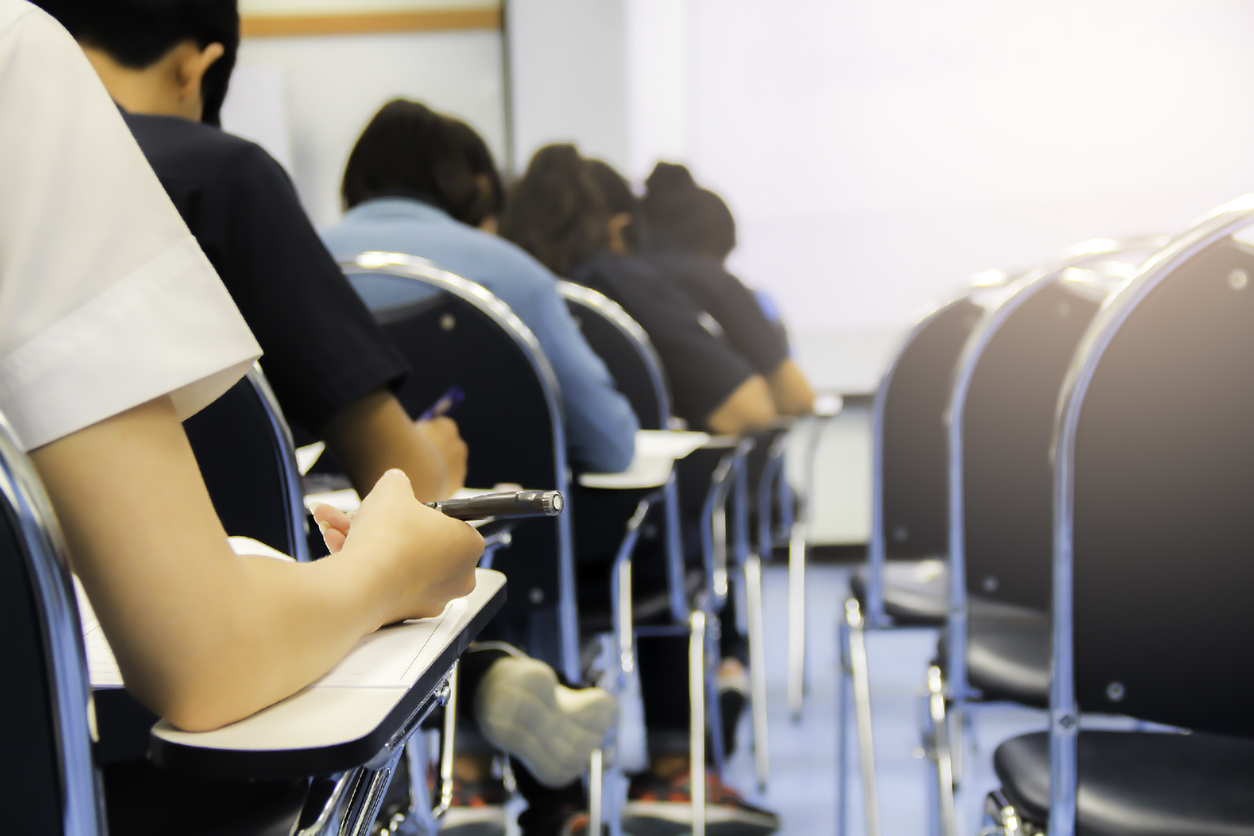The IIT Madras team envisions a future where evidence-based physiological markers guide interventions in education.
Published Nov 20, 2025 | 9:38 AM ⚊ Updated Nov 20, 2025 | 9:38 AM

Students during a test. (iStock)
Synopsis: Researchers at IIT Madras have identified measurable physiological markers that can pinpoint students most vulnerable to test anxiety, offering hope for targeted interventions and proactive support. Analysis revealed that students with higher anxiety tendencies exhibited both more negative FAA and lower tonic HRV, indicating reduced parasympathetic regulation.
For millions of Indian students, exam season brings more than just sleepless nights — it triggers intense anxiety that can affect both mental health and academic performance.
Now, researchers at the Indian Institute of Technology (IIT) Madras have identified measurable physiological markers that can pinpoint students most vulnerable to test anxiety, offering hope for targeted interventions and proactive support.
“Test anxiety affects an estimated 81 percent of Indian students,” an official from IIT Madras told South First.
“Our study sheds light on how the brain and heart interact differently in students who struggle with anxiety during exams, providing a scientific basis for early identification and personalised coping strategies,” he added.
This research, published in the international journal Behavioural Brain Research, goes beyond self-reported surveys to examine objective indicators of stress, focusing on how the brain and heart communicate under pressure.
The findings could revolutionise how schools and universities approach student wellness and performance.
Test anxiety is not just nervousness before an exam; it can manifest in avoidance behaviours, procrastination, and even long-term academic disengagement. While some students manage to perform under pressure, others find themselves frozen, unable to cope effectively.
The IIT Madras team focused on two physiological markers: Frontal Alpha Asymmetry (FAA), which reflects emotional regulation and predisposition to avoidance, and Heart Rate Variability (HRV), which measures the heart’s adaptive control.
By examining these markers together, the researchers could identify students whose brain-heart interactions make them particularly susceptible to stress-induced avoidance.
“The study demonstrates that heart-brain impairment in test anxiety is conditional, primarily affecting individuals with a predisposition to anxiety,” said an IIT Madras official. “Students with negative FAA patterns showed weaker cardiac regulation during stress, making them more likely to disengage or avoid tests.”
The research involved 52 university students who participated in a 30-minute mock test, simulating actual exam conditions. EEG and ECG signals were recorded to track FAA and HRV before, during, and after the test.
An optional extension of the test was included to observe avoidance behaviour, as students could choose to continue or decline.
Analysis revealed that students with higher anxiety tendencies exhibited both more negative FAA and lower tonic HRV, indicating reduced parasympathetic regulation.
These students were more likely to avoid additional testing, confirming a physiological basis for avoidance behaviour. Conversely, students with balanced FAA and higher HRV were better able to cope with stress and complete the test.
“By integrating FAA and HRV, we can identify students at risk before behavioural symptoms become visible,” explained an IIT Madras official. “This moves the focus from reactive interventions to proactive support, potentially transforming mental health approaches in educational settings.”
The IIT Madras study offers more than academic insight; it highlights a path toward practical applications. By training AI systems on these psycho-physiological markers, educators could develop real-time, non-invasive monitoring tools that alert mental health professionals to students at risk, allowing for timely interventions.
“Understanding the physiological basis of test anxiety allows for personalised coping strategies,” the IIT Madras official added. “This could be embedded into school and university wellness programs, offering proactive support rather than waiting for visible signs of distress.”
Experts believe that such interventions could help millions of students navigate academic pressures more effectively, reducing anxiety, improving performance, and promoting long-term well-being.
It also underscores the need to view academic stress not merely as a psychological issue, but as one rooted in measurable physiological interactions.
While the study provides crucial insights, researchers noted that the sample size was relatively small and limited in diversity.
They added that future work will expand to larger participant groups, exploring additional factors such as sleep patterns and activity levels, and may employ advanced techniques, such as EEG-based connectivity mapping, to deepen understanding of heart-brain dynamics.
The IIT Madras team envisions a future where evidence-based physiological markers guide interventions in education.
By bridging neuroscience and educational psychology, the research promises a shift from subjective assessments to measurable, actionable insights that help students not only perform better but also maintain healthier, balanced lives.
(Edited by Muhammed Fazil.)
